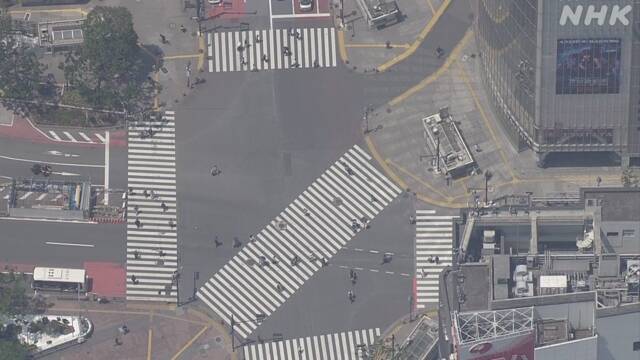National holidays on the first day of the second half of the consecutive holidays were smaller than weekdays at 13:31 on May 3
The number of people nationwide on the 2nd, which was the first day of the 5 consecutive holidays in the latter half of the long holidays, was in the target area of the "specific warning prefectures", and it decreased by 50% to 80% compared to before the spread of the infection, which is a decrease from weekdays. It grew.
NTT DOCOMO is collecting data from 47 prefectures nationwide in a form that protects privacy based on information from mobile phone base stations.
As of 3:00 pm on the 2nd, the population was 85.8% around Umeda in Osaka and 85.8% in Tokyo in the area initially targeted for the declaration of emergency, compared with the average of holidays from mid-January to mid-February before the spread of infection. It decreased by 79.9% around Shinjuku, 76.1% around Yokohama Station, 73.9% around Fukuoka Tenjin, 70.9% around Omiya Station, 68.8% around Sannomiya Station in Hyogo Prefecture, and 67.1% around Chiba Station.
In addition to these seven prefectures, the six prefectures designated as “specific warning prefectures” have 75.9% around Kyoto station, 77.3% around Nagoya station, 74.5% around Kanazawa station, and 74% around Sapporo station. And the amount of decrease exceeds 70%.
In addition, there was a decrease of 60.2% around Mito station and 55.6% around Gifu station.
In other areas, the area around Kamiyacho, Naka-ku, Hiroshima City was down 68%, around Sendai Station was 65.9%, and around Marugame Town in Takamatsu City was down 48.7%.
The number of people nationwide on the 2nd day, which was a holiday, decreased more than on weekdays, but the situation continues to vary depending on the region.

